#navaratri return gifts
Text
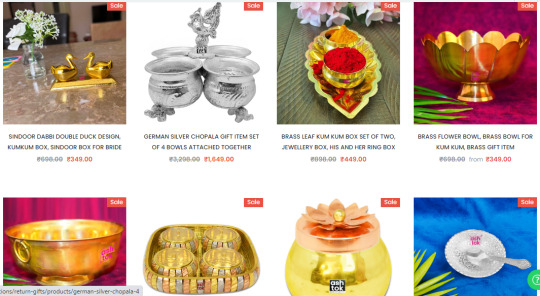
Return Gifts for Ladies, Birthday, Marriage, Diwali, House Warming
#return gifts#best return gifts#birthday return gifts#return gifts online#return gifts for pooja#wedding return gifts#diwali return gifts#return gifts for birthday party#return gifts for ladies#return gifts for housewarming#return gifts for adults#return gifts for marriage#birthday return gifts wholesale online#wedding return gifts wholesale#return gifts for house warming ceremony#silver return gifts#return gift for house warming#return gifts for women#navaratri return gifts
0 notes
Text
Navarathri Golu Return Gifts | Pujacelebrations
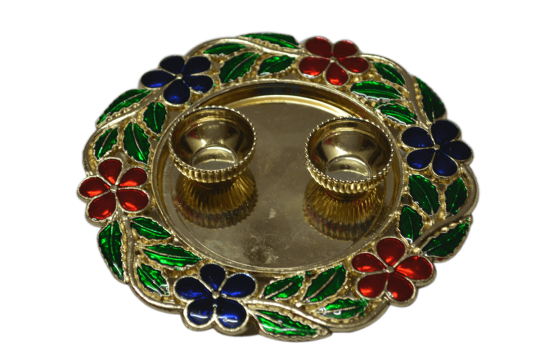
Super saver combo packs!! Hurry! Shop Return Gifts for Varalakshmi Pooja or for any occasion like wedding, festival season, baby shower return gifts! Don’t miss it!
https://www.pujacelebrations.com/return-gifts/diyas-and-holders/kumkum-boxes-holders.html
0 notes
Text
Handcrafted MOTU-PATLU Clay Toys for Kids, Terracotta Toy, Festive Gifting toy, Children Learning Toy, Indian Toy,Home Decoration, Return Gifts, Festive Decor,Diwali Decor, Navaratri Decor
for order call or whatsapp 8337005267***
Buy Now: https://www.amazon.in/dp/B0CF9JWQRR
Terracotta Eco-Friendly Clay Motu Patlu Characters Set of 5 for Children Toy, Indian Toy, Home Decoration & Return Gifts
#claymotupatluset #claychotabhimset #terracottatoy #terracottamotupatlu #motupatlu #motupatlucartoon #chotabhim #claytoy #indiantoy #onlywholesale #moq2000 #claychildrentoy #clayfruit #clayvegetable #montessorieducationtoy #homedecoration #educationalclaytoy #kidslearningtoy #festivedecortoy #clayvegetablemanufacturer #clayfruitmanufacturer #claytoymanufacturer #clayvegetablewholeseler #clayvegetableexporter
#clayfruitwholeseler #clayfruitexporter #childrenlearning #montessorieducation #homedecoration #diwalidecoration #returngifts #birthdaygifts #gonatural #ecofriendlytoy #riverclaytoy #manufacturer #wholeseler #exporter
E: [email protected]***

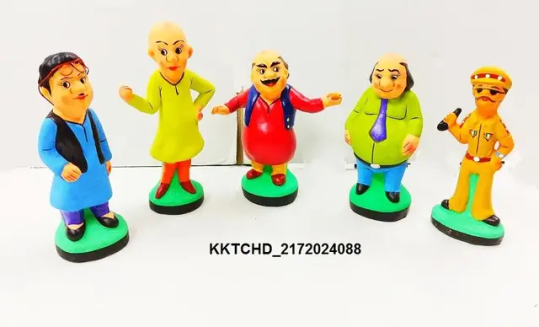
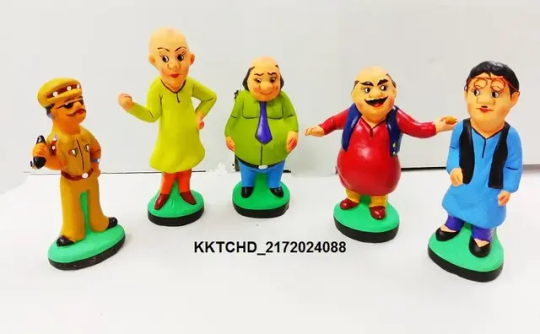
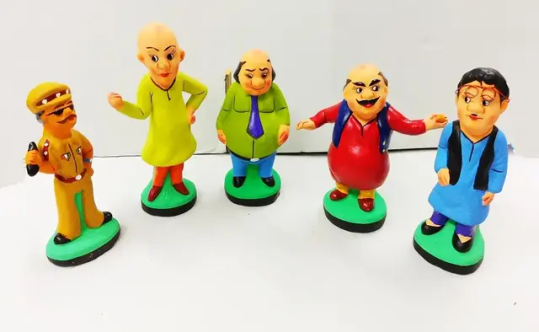
1 note
·
View note
Text
Terracotta MOTU-PATLU Clay Toys for Kids, Festive Gifting toy, Children Learning Toy, Indian Toy,Home Decoration, Return Gifts, Festive Decor,Diwali Decor, Navaratri Decor
for order call or whatsapp 8961147456***
Buy Now: https://www.amazon.in/dp/B0CF9JWQRR
Terracotta Eco-Friendly Clay Motu Patlu
Characters Set of 5 for Children Toy, Indian Toy, Home Decoration & Return Gifts
#claymotupatluset #claychotabhimset #terracottatoy #terracottamotupatlu
#motupatlu #motupatlucartoon #chotabhim #claytoy #indiantoy #onlywholesale #moq2000 #claychildrentoy #clayfruit #clayvegetable #montessorieducationtoy
#homedecoration #educationalclaytoy
#kidslearningtoy #festivedecortoy #clayvegetablemanufacturer #clayfruitmanufacturer #claytoymanufacturer
#clayvegetablewholeseler #clayvegetableexporter
#clayfruitwholeseler #clayfruitexporter #childrenlearning #montessorieducation #homedecoration
#diwalidecoration #returngifts #birthdaygifts #gonatural
#ecofriendlytoy #riverclaytoy #manufacturer #wholeseler #exporter
E: [email protected]***
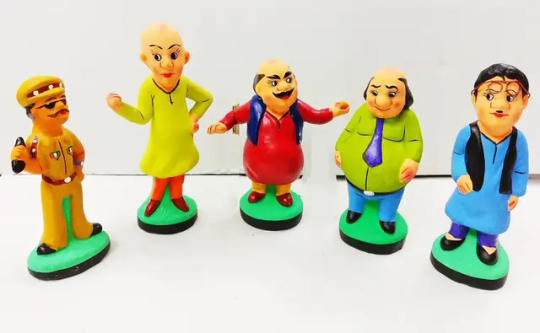

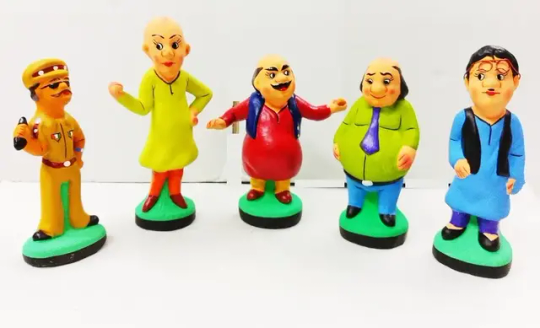

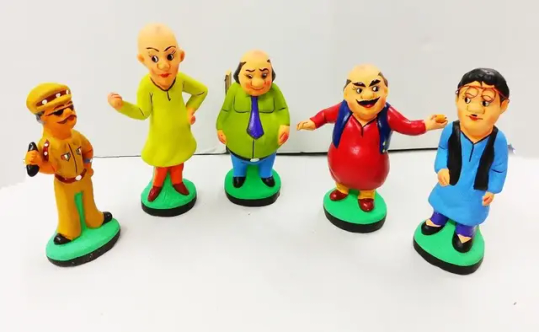

1 note
·
View note
Text
The Festival Chronicles: Embarking on a Journey Through India's Colorful Celebrations
Welcome to The Festival Chronicles, where we invite you to embark on a mesmerizing journey through the kaleidoscope of celebrations that define India's rich cultural heritage. From grand processions to vibrant dances, ancient rituals to mouthwatering feasts, India's festivals are a feast for the senses and a testament to the country's diversity and unity. Join us as we explore the vibrant tapestry of India's most captivating festivals and immerse ourselves in the joyous atmosphere that pervades the air during these special occasions.
Diwali: Illuminating the Path of Light
Diwali, the Festival of Lights, is one of the most widely celebrated festivals in India. It symbolizes the victory of light over darkness and good over evil. During Diwali, homes are adorned with oil lamps and colorful decorations, and firecrackers light up the night sky. Families come together to exchange gifts and sweets, and communities unite in celebration. Discover the significance behind the rituals, witness the mesmerizing fireworks displays, and delve into the spiritual essence of Diwali.
Holi: A Riot of Colors and Joy
Holi, the Festival of Colors, is a vibrant and exuberant celebration that welcomes the arrival of spring. It is a time of joy, laughter, and uninhibited revelry. Participants throw brightly colored powders and water at each other, creating a riot of colors that symbolizes the breaking down of barriers and the celebration of unity. Join in the lively festivities, dance to the beat of traditional music, and embrace the playful spirit of Holi.
Eid-ul-Fitr: Embracing the Spirit of Togetherness
Eid-ul-Fitr, also known as the Festival of Breaking the Fast, is a joyous occasion celebrated by Muslims worldwide. It marks the end of Ramadan, a month of fasting and spiritual reflection. Families gather for prayers at mosques, exchange heartfelt greetings, and share delicious meals. Experience the warm hospitality, savor the delectable traditional dishes, and witness the spirit of unity and compassion that permeates the air during Eid-ul-Fitr.
Ganesh Chaturthi: Invoking the Blessings of the Elephant God
Ganesh Chaturthi is a vibrant festival dedicated to Lord Ganesha, the elephant-headed deity revered as the remover of obstacles and the harbinger of good fortune. Elaborate clay idols of Lord Ganesha are created and worshipped with great devotion. The festival is marked by processions, lively music, and energetic dances as devotees immerse the idols in water bodies, symbolizing the deity's return to his celestial abode. Discover the mythological stories behind Lord Ganesha, witness the elaborate decorations, and revel in the joyous chants that fill the air during Ganesh Chaturthi.
Navaratri and Durga Puja: Celebrating the Divine Feminine
Navaratri and Durga Puja are festivals that honor the goddess Durga and celebrate the triumph of good over evil. Navaratri, meaning "nine nights," involves vibrant dance performances, known as Garba and Dandiya, where participants clad in traditional attire dance to the rhythm of music and drums. Durga Puja, primarily celebrated in West Bengal, showcases intricately crafted idols of the goddess Durga and elaborate processions accompanied by traditional music and cultural performances. Experience the devotion, marvel at the artistic creations, and immerse yourself in the fervor of these vibrant celebrations.
Pongal: Harvesting Gratitude and Abundance
Pongal is a harvest festival celebrated in the southern state of Tamil Nadu, marking the gratitude for a bountiful harvest.
0 notes
Link
Athulyaa brings out the divinity in your occasions,festivities through hand-picked metal return gifts.
https://www.athulyaa.in/product-category/return-gifts/white-metal-gifts/
1 note
·
View note
Text
https://shaabee.com/navratri-return-gifts-combo Online wholesale market for an exclusive collections of return gifts from shaabee
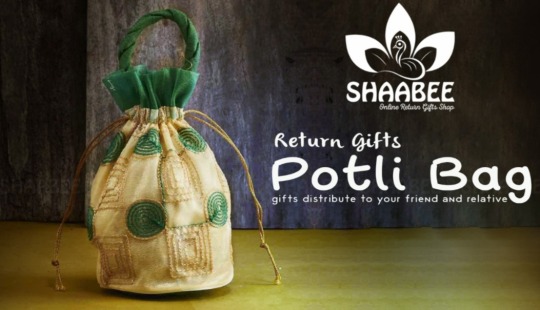
#shopping#bigdata#return gifts#return#wedding#trending gifs#navratri#navaratri#festival#good morning
0 notes
Text
postcard news
Devi Parvathi is respected all through our nation in various structures. Durga pooja, Navaratri, vijaya dashami, are all things considered celebrations applauding devi parvathi in her incredible structure controling win of good over trickery.postcard news
In South India party of Swarna Gowri Vratam is esteemed and celebrated on the third day (Thadige) in the hour of Bhaadrapada. Swarna suggests 'gold' and in this celebration, Goddess Parvati is adored in her heavenly, wonderful structure. Devi is envisioned with an astonishing piece and appreciated.
After the pooja, ladies trade 'Bagina'– bamboo mora piled up with nine sorts of grain (navadhanya), near to Jaggery, bangles, turmeric, a shirt piece, kumkum, betel leaves, verdant sustenances and dakshina/cash.
All the things required for the game-plan of food are kept in bagina. It is recognized that what we offer wholeheartedly will return back in sort of punya. Our celebrations have rehearses with more noteworthy significance. Hitched ladies used to travel divisions in prior days to appear at their kin home. Travel used to take days together. Thusly the things in bagina would be utilized to set up their supper while venturing. It was called 'Patheya'.
Ladies play out the pooja at their maternal homes as a characteristic of regard and gratefulness to their kin. Their family offer them mind boggling pieces of clothing, dakshine(money), bangles which all deduces that whether she has left her home, at any rate the security stays impeccable and solid as could be.
After the pooja , the following day, Ganesha celebration is idolized. Ganesha has come to take his mom to Kailasa from her kin home. Gowri is given a warm visarjana/send off by offering Udi (offering all the favored things like Turmeric, Flowers, Vermilion, Blouse piece, Rice, Betel nuts and leaf, Turmeric root and dry Coconut) and the worshiped picture is drenched in water near to Lord Ganesha's god.
Offering udi is a portrayal of wishing all the accomplishment and abundance of pleasure to the youngster.
The story behind swarna gowri celebration:
Parvati tried a certifiable pay to impact the adoration for Lord Shiva. She did the reparation for a long time, during which She continue on through just on roots and characteristic things. Ruler Shiva content with Her amends at last rose up out of his samadhi and wedded Goddess Parvati. This is additionally one reason behind wedded ladies playing out the Puja for a long time.
Shanmukha, the posterity of Lord Shiva referenced that His dad portray a Vratha that could be seen by everybody and which would give family members, prospering and euphoria. Expert Shiva delineated the story to Shanmukha and clarified the monstrosity of survey swarna gowri vratha.
There once carried on a King, Chandraprabha who was directing Vimalapura, a city on the banks of the Saraswathi River. He was an equitable ruler and All his subjects lived joyfully under his standard. He had two life accomplices. He esteemed his first life accomplice, the most.
In the end, the King entered a thick woods for seeking after. He executed a few wild creatures, for example, pig, lion, and so on. He was depleted and was feeling dry as well. He went looking for water. He saw a lake close by and slipped from his pony to take some water. He saw several ladies offering Puja close to the lake. Inquisitive about the Puja, he got some information about the Puja they are performing and its criticalness.
The ladies said that the Vratha is known as Swarna Gauri Vratha and by playing out the Vratha, all the needs would be presented. It was Bhadrapada Shukla Trithiya. The ladies clarified the administrations related with the Puja. The ace was glad to hear the story. He played out the Vratha with phenomenal dedication and tied the blessed string on his correct wrist and returned to his celebrated residence.
The ace revealed about the Vratha to the two his buddies. The main life accomplice was not content with ruler playing out some pooja, she got the string from his correct wrist and tossed it on a close to plant which had disappeared.
After explicit days, new leaves started to make from the dried plant. Such was the power of the 'dora'(the blessed string). The ruler's resulting mate was glad to see life in the dried plant. She got a handle on the significance of that string, She took it from the plant and associated it to her wrist and played out the Puja to goddess parvathi. She was regarded with riches and accomplishment and love of the King.
The fundamental mate, because of her carelessness about the Vratha expected to leave the supreme home. She meandered in timberland regions and expected to encounter untold sufferings. As her enduring got horrendous, she cried wretchedly. Goddess Parvati showed up before her and reassured the sovereign. The sovereign appreciated her mix-up and performed Swarna Gauri Vratha with all duty. Goddess Gauri gave delight and love of her significant other. Both the King and the sovereign lived happily.
The story recommends the intensity of dedication. We may have all the solaces of life. In any case, it is every one of the a quick eventual outcome of gift of the God. We ought to reliably review that. Being given to devi will give unending ecstasy.
In the present in question and materialistic world,the merriments are recommends by which entire family get together. The festival frees from any separations between them. God never requests any outrageous duty. We have heard story how Radha's basic duty of a fledgling was satisfactory to orchestrate the enormity of Shri Krishna. So lauding party does exclude costs. It is associated with resuscitating our trust in the God and suffering with quietude, that we people are no match to the uncommon force.
1 note
·
View note
Photo

Sonamhelps’ Beginners Guide to Hinduism and the Hindu Gods
‘Hinduism’ is really just an umbrella term under which many varied religious traditions and practices fall. In this guide I will give an introduction to the main gods and goddesses and summarise some general beliefs and terminology. I will also offer some useful tips for writing Hindu characters, and outline some stereotypes to avoid.
NOTE: This guide will be made objectively and will not be from the perspective of a particular branch of Hinduism. If you would like to know about my personal beliefs and the tradition I follow feel free to ask!
Firstly, some information about Hinduism:
Hindus worship in temples and each temple will be devoted to a different god, or group of related gods and goddesses. When visiting a temple you have to take your shoes off as a sign of respect because you are entering God’s house. The deities of the God will be in the temple room, and when entering Hindu’s bow down to the floor, again as a sign of respect and to pay obeisances.
In Hindu households you will often find pictures and murti’s (small statues) of gods and goddesses. Usually of the main god/gods the household worships and Lord Ganesh, the remover of obstacles, for protection. Statues of the gods and goddesses are a point of focus for Hindus in their prayers.
Hindus acknowledge that God is fundamentally the One without a second. God is absolute, formless. This Supreme, Universal Soul is known as Brahman. Brahman is considered to be the universe and everything in it, and it has no form or limits. Please remember that Brahman is NOT a god, it is more like a divine, universal energy.
One perspective on the worship of the Hindu Gods is that they acknowledge that there is one God, but because God manifests himself in all these different forms to perform different roles, Hindus choose which form of God to worship. For example, families who desire more material wealth may worship Shiva, or families that want academic success may focus their worship on Saraswati. The main god or goddess worshipped by a family tends to be passed down patrilineally for generations.
‘Converting’ to the religion is not a requirement and there is no conversion ceremony as there is in other religions. Converting to Hinduism means embracing the religion and letting your actions, thoughts, way of life and philosophy reflect your belief. In most Hindu sects it is unusual to convert because the religion is considered something you have to be born into. However, there are many sects which welcome newcomers and people from all religions and backgrounds have joined them. The most well known of these are Krishna Consciousness (ISKCON) and transcendental meditation.
Hindus do not worship cows. Cows are respected, honoured and considered sacred. They are more a symbol of the Earth and prosperity because they give more than they take. They are seen as mothers because the cow always gives and feeds, representing life and the support of life.
The Hindu Trinity:
The Hindu Trinity, or Hindu Triumvirate, consists of Brahma (not to be confused with Brahman), Shiva and Vishnu. They have the biggest roles in the pantheon and are three of the most widely worshiped Hindu gods.
Brahma - the Creator - Brahma is known as ‘the Creator’ because he creates the universe and everything in it. Many Hindu’s believe that time is cyclical, so the universe is created, lasts for a certain amount of time, and is then destroyed. The universe lasts for one day of Brahma (4,320,000,000 years), after which it is destroyed and another universe is created by Brahma. - If you’re interested in learning about this I encourage you to look up Hindu cosmology, but it can be a difficult idea to get your head round.
Vishnu - the Preserver - Vishnu is known as ‘the Preserver’ because he maintains the order and harmony of the universe. Vishnu is worshipped in many forms and in several avatars (incarnations). His role is to return to the earth in troubled times and restore the balance of good and evil, as one of his incarnations. His wife is Laksmi
Shiva, the Destroyer - Shiva is known as ‘the Destroyer’ because he is tasked with destroying the universe to prepare for its renewal at the end of each cycle of time. According to Hindu belief, this destruction is not arbitrary, but constructive. Shiva is therefore seen as the source of both good and evil. His wife is Parvati
Vishnu Avatars:
Vishnu has 10 avatars, or incarnations. These are Matsya, Kurma, Varaha, Narasimha, Vamana, Parashurama, Rama, Balarama/Krishna, Buddha, Kalki. The most well known of these are Rama and Krishna.
Rama - one of the most beloved Hindu gods and is the hero of the Hindu epic called the Ramayana which tells the story that led to the Hindu festival of lights; Diwali. His wife is Sita.
Krishna - known as the speaker of the Bhagavad Gita and for his promise to humanity that he will descend to earth whenever belief in God declines. He himself has 4 avatars to fulfill this purpose. His wife is Radharani, she is sometimes considered to be the feminine aspect of Godhead. Many traditions believe that Krishna is the source of the ten avatars, not Vishnu, in which case his brother Balaram is the eighth avatar.
Some other main gods/goddesses:
Ganesha or Ganapati - he is Shiva’s first son. Lord Ganesh has an elephant head. He is known as the Remover of Obstacles. Most Hindu households will have a picture or statue of Lord Ganesh.
Saraswati - she is the consort of Brahma the Creator and is worshipped as the goddess of learning, wisdom, speech, and music. Many Hindus will offer prayers to Saraswati for help in school and especially exams.
Lakshmi - the goddess of good fortune, wealth, and well-being. As the consort of Vishnu, she plays a role in every incarnation of his.
Durga Devi - Durga is the main form of the goddess. She is a powerful, even frightening goddess who fights fiercely in order to restore moral order. Yet, she is full of compassion and love for her devotees. She is the embodiment of Shakti, the female principle of divine energy,
Indra - the King of Heaven and lord of the gods. He wields a thunderbolt and is a protector and provider of rain.
Surya - the sun god. He is a golden warrior arriving on a chariot pulled by seven white horses.
Hanuman - the monkey king. Hanuman is featured in the Ramayana. He earned his path to being worshipped by performing feats of strength, devotion, and courage while helping Rama.
The Main Hindu Festivals:
Sarasvati Puja - honours the Goddess Sarasvati. Takes place in January.
Maha Shivaratri - celebrates Lord Shiva. The festival usually takes place in February/March on the night and day before the new moon.
Holi - Holi is known as is the Hindu festival of colours because on this day people paint each other with coloured dyes and poweders. It marks the beginning of spring. It is most commonly celebrated in Northern India and takes place around late February/ March. At night Hindus build bonfires to combat evil spirits. (read about the story of Holi here).
Rama Navami - celebrates the appearance (birth) or Lord Rama. In March/April.
RathaYatra - a huge deity of Jagannatha (an incarnation of Lord Krishna) is placed on an enormous, decorated chariot and is pulled through the streets amidst a procession of worshippers. Takes place in June/July.
Raksha Bandhan - takes place in August. It is a celebration of the bond between siblings. Sisters will tie a Rakhi (silk thread) around the wrist of their brothers.
Krishna Janmashtami - a festival to celebrate the appearance (birth) of Lord Krishna. The festival is usually celebrated over two days because Krishna was born at midnight. Takes place around August/September.
Navaratri - primarily celebrated by Indians, this festival lasts nine days in September/October. It honours the goddess of valour, Durga.
Diwali - or the festival of lights, celebrated by Hindus and Sikhs around the months of October and November. It represents the triumph of good, light and knowledge over evil, darkness and ignorance as told in the Ramayana. It is also a time to honour the Goddess Lakshmi. Over the 5 days of Diwali people will light small candles (Diyas) in their homes, spend time with family and exchange gifts (usually of money, clothes and sweets). The day after Diwali is usually the Hindu new year.
Writing a Hindu Character:
This is a very general guide to the Hindu Gods, if you’re interested in knowing more I highly recommend you research them or you can ask me a specific question and I’ll do my best to answer it.
Hinduism is one of the oldest religions in the word but unlike other religions, it is still going strong thousands of years later. If you’re thinking of writing a Hindu character, don’t be put off by the religious aspect! You won’t be expected to know everything about the religion, unless your character is actually a Hindu priest or monk.
These are some basic religious and cultural traditions that you can incorporate into any Hindu character:
The deity they worship will often depend on the country or Indian state they grew up in/ that their family originate from.
A religious Hindu will visit the temple at least once a month as well as on New Years Day, on their birthdays and on the days of the main Hindu festivals; Diwali, Holi, Navratri, and the appearance day (birthday) of the main god they worship.
Almost all practising Hindu will not eat beef or any form of cows meat.
When praying to God, they may address their prayer to a specific god/goddess depending on what they are praying for, e.g. to Sarasvati for good grades or Ganesh for protection.
If they are at university/college their parents will have almost certainly given them at least one picture or statue of a god to take with them and put in their room.
On religious days, more religious Hindus may not eat meat or drink alcohol as a way to observe the festival.
If you do decide to write a Hindu character, please be respectful of the religion & the beliefs of those who follow it. People who fall under the umbrella of Hindus are diverse, welcoming and vibrant and we would love to see Hindu’s being represented more in the community!
Good places to start further research:
Hinduism Faith Guide - University of Warwick
Responses to 101 Questions on Hinduism - John Renard
http://www.dummies.com/religion/hinduism/hindu-gods-and-goddesses/
http://www.religionfacts.com/hinduism
Indian Characters - Writing POC 101
The information used in this guide has been taken from my own knowledge and a variety of internet sources to make sure the facts are correct.
I would also like to thank @cllytemnestra for helping me to construct this guide.
I hope this helps you!
Jas x
#guide#writing help#hinduism#hinduism guide#rph#research#research: religion#research: hinduism#m#m: guide
90 notes
·
View notes
Text
Buy Return Gifts for Ladies, Birthdays, Marriages, Diwali, House Warming Ceremonies at Ashtok
Giving return gifts to the guests who’ve attended your happy events is about showing your appreciation to those who took the time to celebrate your special moments with you. By sending them a return gift, you’re letting them know that you appreciate their presence and their good wishes during the happiest moments of your life. Whether it’s return gifts for a wedding, an anniversary celebration, or a birthday party, gift cards are your best option.
Buy return gifts for ladies, birthdays, marriages, Diwali, and housewarming ceremonies at the best price. Ashtok provides a huge selection of best return gifts in a variety of categories, such as useful return gifts, corporate gifts wholesale online. Get your order with free shipping.
Buy Brass Sindoor Dabbi Double Duck Designs:-
Traditional Brass Sindoor Boxes with Double Duck for Daily Use. It's a beautiful Hindu Tradition way that all Married Women wear Kumkum after getting married. It even enhances her beauty and a kind of prayer for the long life of her husband. The Brass Sindoor Box with a lid covering and stopping the sindoor from spilling out.
Buy Brass Flower Bowl for Return Gift :-
The Ashtok Lotus Bowl is entirely made of pure brass. The Brass Bowl is round in form. It has a level base that allows it to remain still when put on a flat surface. The Bowl has a sharp neckline and obtuse edges for security. It is made of the best quality brass.
The brass fruit bowl is widely used to hold fruits or flowers and to adorn a table or teapoy by placing the brass bowl on it. It has a pedestal base with an excellent hand-carved design. This brass fruit bowl is perfect for any occasion. Wedding gift things, birthday gift items, Diwali gift items, kitchen gift items, corporate gift items
Contact Us:-
Call - In: +91 9492412121
USA: +1 2489182148
Mail us: [email protected]
visit Us:- www.ashtok.com
#return gifts#best return gifts#birthday return gifts#return gifts online#return gifts for pooja#wedding return gifts#diwali return gifts#return gifts for birthday party#return gifts for ladies#return gifts for housewarming#return gifts for adults#return gifts for marriage#birthday return gifts wholesale online#wedding return gifts wholesale#return gifts for house warming ceremony#silver return gifts#return gift for house warming#return gifts for women#navaratri return gifts.
0 notes
Text
Improve Your Business with a Festival Greeting Card Making App for Android
Whether you are looking to run a traditional brick-and-mortar store or an online business, you must promote your venture carefully so that it brings you the financial success that you are looking for. Among the many creative ways to attract customers to your business, one of the most effective ones is of course using a business marketing post maker app for Android that can enable you to come up with unique and attractive promotional material for your business. The image that you create in the minds of your prospective customers plays a significant role in determining immediate and long-term success. This is why getting a banner and poster-making app is important as it can help you to create unique promotional material for generating great financial returns.

A powerful and versatile festival greeting video maker and poster maker can be just the tool your business needs when you are trying to reach out to your audience and develop a lasting bond with them. Customers love it when you remember their birthdays and days that are of special importance to them. They also appreciate it when you wish them on special events such as Valentine’s Day, Navaratri, Holi, Dusshera, Christmas Day, and New Year’s Eve. The digital banner and greetings card-making application can make it easier for you to come up with stellar content that can certainly appeal to your customers. You do not need to be a gifted artist to come up with stylish greeting cards and other kinds of promotional content. The business marketing poster-making apps have many attractive and easy-to-use features that can help you manage all the creative work.
Once you start working with a festival video status app, you can be sure of the fact that you can make more customers for your business in a successful manner. Versatile and intuitive, the greeting content making app has got numerous exciting features that can enable you to create any kind of striking posters and visuals that can effectively carry the message of your business across to your audience. These apps are made to streamline your promotional tasks so that you can progressively generate more sales for the products and services of your company. So, do not hesitate to work with a greetings card-making app that can generate great returns for your business.
#festival video status app#digital banner#festival banner maker#business marketing post maker#personalized greeting cards#festival greeting video maker#marketing video maker app#best greeting card app for android#good morning banner#all festival greeting card maker
0 notes
Photo

#rose Happy Gudhi Padva !!! In Siddha Yoga and Indian culture we celebrate 🎉 first day “padva” of shukla paksh. - the waxing moon. It also marks the beginning of Spring Navaratri. The 9 Nights of Goddess Ready to celebrate 🎉 From the Ancients... Goddess Durga asked to recreate the universe after a halt in time. Lord Brahma answered the Goddess. Today also marks Lord Rama victory over the evil Ravana. Rama returns to his Kingdom. What do we do to honor and celebrate? Clean and decorate our homes. Silent prayers of gratitude. Colorful decorations and blooming flowers placed all around. Take a walk in nature and enjoy the free bouquets that Mother Nature gifts us. This is a time of external and internal cleansing. Awaken to a new spring year. Have a feast of food this evening. And enjoy all of your hearts wishes and desires to be coming true. Always ☯️ ~ Be a YOUniquorn🦄. Mermake today your #OM 🕉 Breathe. Smile. Everything is alright right now. In this moment. Alright Alright Alright. Xoxo 😘 - KMacK 🧜🏼♀️ pirate 🏴☠️ ninja 🥷 #mermaid #krystal #ninja #pirate #gudhipadva #rama #goddess #durga #brahma #navaratri #om #namaste #prasad https://www.instagram.com/p/CNnB-9fJC1F/?igshid=1j9tgva0i7a5z
0 notes
Text
Hi Good Morning From Surprise Wrappz!

"Spread happiness and celebrations among your friends and families with return gifts."
Fill your occasions like wedding, parties, and festivals like Diwali, Navaratri, baby shower with our gifts like wooden traditional hanger, ethnic baskets and storage containers.
For further details and professional service,
Call us on 89782 43957
0 notes
Text
Chaitra / Vasanta Navaratri ~ ThE springtime InvoCation Of Adi sHaKti
Chaitra Navaratri , or the nine (nava-) nights (- ratri) of Durga, are celebrated in the first nine days of the bright half of the month of Chaitra (starting from the day after Amavasya). According to the Indian lunar calendar, this usually occurs in late March or early April.
This period of nine days heralds the onset of spring and also marks the beginning of the new year for the hindu calendar in most parts of India. The nine-day festival honors the role of three prinicipal female Goddesses in the Hindu pantheon – Durga, Lakshmi and Saraswati. The period of Chaitra Navaratri concludes with Ramanavami (or Lord Rama’s birthday) on the tenth day of the festival.

Chaitra Navratri Customs & Traditions :
The nine day period is marked as a period of “cleansing” and fasting by all devotees of Devi. The durga suktam is chanted with great vigour every evening during this period. The festival is marked on the eighth day or ashtami by honouring a group of kanjaks or pre-pubescent girls.
A group of five (or seven or nine) such girls are invited into the household and treated as representatives of Durga. The head of the household washes their feet, and then they are fed a sumptuous meal of halwa, puris, black chana and yogurt with boondi. They are then given a set of red clothes or a red chunni and a small gift of cash and asked to bless the household.
LEGEND OF CHAITRA NAVARATRI :
King Dhruvasindu of the kingdom of Kosala was killed by a lion on a hunting trip. In his place, Prince Sudarsana was to be
crowned King. But King Yudhajit of Ujjain and King Virasena of Kalinga wanted to secure the throne of Kosala for their respective grandsons. As a result a war erupted in which killed King Virasena. Queen Manorama, the daughter of King Virasena fled with Prince Sudarsana and an eunuch to a forest where they took refuge with Rishi Bharadwaj in his hermitage.
With the obstacles in his path removed King Yudhajit crowned his grandson Satnijit at Ayodhya, capital of kingdom of Kosala and tried to capture Queen Manorama and the prince. However the Rishi refused to let harm come to those who had sought protection from him. Prince Sudarsana started to call the enuch, whose name was “Kleeba”, by the word “Kleen”. This syllable was a powerful sacred Sankrit mantra and is the root syllable of the Divine Mother, or Maa Durga. Since the Prince Sudarsana went on repeating the word he obtained peace of mind by the grace of the Divine Mother.
Maa Durga appeared to him, blessed him, and granted him certain divine weapons. Years later when the emissaries of the King of Benares passed through the ashram of Rishi, they saw the noble Prince Sudarsana and recommended him for marriage to Princess Sashikala, the daughter of the King of Benares. A Swayamvar was held for her to choose her future spouse and she chose Prince Sudarsana. They were joyfully wedded. King Yudhijit was present at the wedding and was angry at the King of Benares.
Maa Durga sided with the Prince and his father-in-law, the King of Benares. But King Yudhijit mocked her. Maa Durga got angry and reduced him and his army down to ashes. Prince Sudarsana, his wife Princess Shashikala and the King of Benares praised the Maa Durga which pleased her and she ordered them to worship by performing a “havan” during Chaitra Navaratri.
The Prince and his wife returned to the ashram of Rishi Bharadwaj, who gave them his blessing and crowned the Prince as the King of Kosala. As per the commands of the Divine Mother the havan is performed during the month of Chaitra and is called Chaitra Navaratri.

Navaratri is divided into sets of three days to adore different aspects of the supreme goddess. On the first three days, the Mother is invoked as powerful force called Durga in order to destroy all our impurities, vices and defects. The next three days, the Mother is adored as a giver of spiritual wealth, Lakshmi, who is considered to have the power of bestowing on her devotees the inexhaustible wealth.
The final set of three days is spent in worshipping the mother as the goddess of wisdom, Saraswati. In order have all-round success in life, we need the blessings of all three aspects of the divine mother; hence, the worship for nine nights.
Chaitra Navratri in 2017, like every year, is going to be celebrated during Basant Ritu (spring season), which is the time of March - April. That is why this festival is also called Vasant Navratri or Basant Navratri.
FESTIVAL DATES : 28TH march 2017 to 5th April,2017
FULL CALENDER OF Vasanta Navaratri to be posted soon on our page ...stay tuned !
27 notes
·
View notes
Text
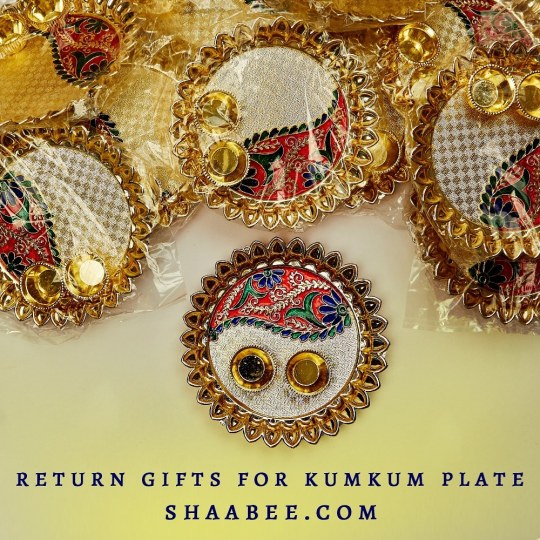
https://shaabee.com/minakari-gifts.html https://shaabee.com/returngift-keystand-athi-varadar-design-4x4-size.html Gift Size-Height-4 Inch Width-6 Inch
Logo-Shaabee Gifts -Key Hanger-Athivaradar design
Material--Wood and Minakari Work
This is a Key holder,made up of good quality of wood materials and decorate with golden foil sheet.This piece of decorated and highlighted with athi varadar design & minakari design.
This multiuse key holder is perfect gift for your loving one.
It is a perfect gift birthday, Diwali Return Gifts/Navratri return gifts/Engagement Return Gifts/ House warming/ Wedding Return Gifts/Half Saree function/Ear Piercing /NamingCeremony/AyushHomam/Upanayam/Shastiapthapoorthi/seemantham/sadhabishegam.
*Made in India Care Instruction - Don't wash, tissue paper,use dry cotton cloth to remove dirt
Occasion:Engagement Return Gifts, Gift Combo, House warming, Navaratri Return Gifts, Return Gifts, Wedding Return Gifts,Half Saree function,Ear Piercing ,Naming Ceremony all festival...
#wedding#Good morning#grt#jewelley#nac#lsithajewellery#saress#pothys#housewarming#house#Tamil#Weddings#gifts shopping#thamboolam
0 notes
Text
List of Indian Festivals
List of Indian festivals: Religious festivals widely in the country
Here is a quick list of the most famous festivals in India. To join the festivals of these festivals, search for this type of festival before going to the best places of Indian cultural heritage.
1. Diwali: Great festival of lights.
One of the most prominent Hindu festivals in India, Diwali is celebrated with great pomp and entertainment. During this festival of light, the houses are decorated with clay lamps, candles and Ashok leaves. People wear new clothes, participate in family quotes, make cookies and deal with friends, family, and neighbors.
Meaning: After 14 years of exile, Lord Ram, his wife Sita and their brother Laxman symbolize the return.
Highlights: A home decorated with elegant lights, candles and kerosene lamps, shops and lively markets as well as fireworks and cookies.
When: The darkest night of the new moon of the month, Kartik of the Hindu calendar, according to the Gregorian calendar, from mid-October to mid-November.
Where: all over the country.
2. Holi: The vibrant festival of colors.
Also known as the festival of colors, Holi is one of the most famous festivals in India, which is celebrated all over the country. On the eve of Holi, people make huge Holika bonfire all around, sing and dance. On the day of Holi, people gather in open areas and apply dry and wet colors of different colors, some of which are full of water guns and colorful balloons are water.
Meaning: It means the victory of evil (Holika) and good on the arrival of spring (prince Prahlad).
Highlights: Holika beats, color scheme and cannabis plate
When: The full moon of Phalgun (full moon) of the Hindu lunar calendar, corresponding to the March month of the Gregorian calendar.
Where: almost in the whole country; The most vibrant festival can be seen in the northern states of India.
3. Dashera: Witness over the evil of good over evil
Dusshera, also called Vijayadashmi, is one of the most famous festivals in India. It is celebrated in various forms throughout the country. Ramlila (the Ramayana staged) will be there for 10 days everywhere. It culminated with "Ravana Dahan", a true sight for the fire, the fire of the massive idols of Ravana, Meghnath, and Kumbhakarna.
Meaning: Celebrate the death of demon King Ravana in the hands of Lord Rama.
Highlights: Great event of the commotion of decorated markets and incarnation of Ram-Leela and incantations of statues of Ravana, Meghnath, and Kumbhakarna.
When: According to the Hindu lunar calendar, Ashwin is the 10th day of the month, which coincides with September or October of the Gregorian calendar.
Where: Pan India
4. Navaratri: fasting, faith, and devotion for nine days.
The Navaratri festival is celebrated in different ways by all the inhabitants of India. In Gujarat, this is a nine-day festival to relive the Garba Nights and the energetic dance Dandiya Ras. People wear beautiful and colorful traditional clothes and the atmosphere is very young and inspiring.
Importance: represents the celebration of the goddess Amba (Shakti) in nine different ways.
Highlights: 9-day dance festivals in Gujarat, the best dishes of Chania Choli (traditional skirt and blouse) and Gujarati: Sabudana Khichdi, Mandvi Pak, Singoda Kheer and Potato
When: according to the Hindu lunar calendar, the first nine days of the month of Ashwin, which coincides with September or October of the Gregorian calendar.
Where: almost all over the country; The most vibrant of Gujarat, Maharashtra, and meters.
5. Durga Puja: prosperity, kindness, and devotion
One of the most important Hindu festivals in India, Durga Puja is celebrated with grandeur throughout the country by the Bengali people. There are cultural songs, dance, and theater in the 10 days of fasting, feasting, and worship of the goddess Durga. The large and beautiful idols of Durga are located in specially designed artistic pandals. People wear traditional clothes and walk around Pandal, waiting, praying and feasting.
Importance: Remember the call of the goddess Durga to Lord Rama before you fight with the demon king Ravana.
Highlights: Plush Pandal, Incredibly Beautiful Ten-Armed Durga Statues and Worship
When: The tenth day of Ashwini Shukla Paksha according to the Hindu lunar calendar, which coincides with September or October of the Gregorian calendar.
Where: Calcutta and Metropolis are the best places in India during the Durga Puja celebrations.
6. Krishna Janmashtami: the birth of powerful and wicked
Janmashtami is once again one of the most important religious festivals in India. The Janmashtami celebrations are very popular in Mathura and Vrindavan. People fast all day and break it with a special meal after the night. In the middle of the night, singing, praying, dancing and singing bhajans in the temples is a festival of the birth of Lord Krishna. Often young children are ready as Lord Krishna on this day. Images and illustrations of the story of Krishna's life are represented in the temples of "Jhanki".
Importance: This is Lord Krishna's annual holiday.
Main Attractions: Janmashtami Offer and Lord Krishna Temples and Festivals in Temples
When: 8th day of Krishna Paksha (black fortnight) of the month of Bhadrapad (Ashtami) According to the Hindu calendar, which coincides with the months of August or September of the Gregorian calendar.
Where: The Hindu community is celebrated everywhere, but the celebrations in Mathura and Vrindavan are very popular
7. Ganesh Chaturthi: Eleven Days of Adoration to Lord Ganesha!
Ganesh Chaturthi is one of the most important Hindu religious festivals in India, a colorful festival of 10 days. Massively handmade Ganesh idols are installed inside or outside houses in public pandals. The worship takes place in the morning and afternoon. The last day is the day of immersion, the immersion of an idol in a body of water. Cultural activities of singing, dancing, and theater, as well as free medical camps and blood drives, are organized.
Importance: It's the birthday of Lord Ganesha, the elephant goddess.
Highlights: Beautiful Ganesha statues and immersion ceremony.
When: the day of the fortnight (Shukla Chaturthi) in the month of Bhadrapada of the Hindu calendar, which coincides with the months of August or September of the Gregorian calendar.
Where: In the states of Maharashtra and Andhra Pradesh, this event is celebrated with enthusiasm and joy.
8. Gurupurab: religious procession and peaceful psalms.
In the largest Sikh festival in India, special meetings are held on the life and teachings of gurus in gurudwaras and anchor (collective food). Karh Prasad is distributed among all and the parishes of Bhajan are held in the city. People burn their homes with candles and burn cookies.
Importance: This is the anniversary celebration of the ten Sikh Gurus.
Great attraction: Bhavishi Bhajan-Kirtan (hymn), Gurbani, anchor and Karah Prasad in Gurdwaras
When: the day of the full moon of Kartik month of the Hindu lunar calendar, which coincides with
For the Gregorian calendar of November.
Where: All over the world, especially in Punjab, the Sikh community
9. Raksha Bandhan: Strengthening kinship
Rakhi is celebrated among Hindus, one of the famous festivals of India. It means, the bond between the brother and sister, during Rakhi, sister performs an over (prayer), she tilak and binds Rakhi (sacred thread) on brother's wrist so that her success can be wished. Promises in favor of protecting the siblings. Another festival that has great equality with Rakhi is Brother Duj, which comes right after Diwali.
Meaning: It is a symbol of a strong bond that unites a brother and sister.
Highlights: Rakhi's rousing and market with a colorful variety of Rakhi rituals and sweets.
When: The day of full moon of the month of Shravan of the Hindu calendar, which coincides with the August month of the Gregorian calendar.
Where: especially in North, Central, and West of India
10. Eid-ul-Fitr: Fantastic Buffett and Sweet Parties
Eid is one of the main festivals of India for the Muslim community. People wear festive clothes, participate in a special prayer in the morning community, meet friends and family, and exchange sweets. Children get Idi (money or gifts) from the elderly.
Meaning: She is celebrating the end of the holy month of Ramadan fasting.
Highlights: In the markets and mosques morning and early morning, mosques are visited with elegant and sweet food items.
The first day of the month of Shravan of Hijri's lunar calendar, which coincides with the July month of the Gregorian calendar.
Where: The whole country is celebrated by the Muslims.
11. Bihu: dance, music, and laughter
Bihu is a festival of Assam, popular in the famous festivals of India in the northeast. During the month-long celebrations, young men and women wear their traditional clothes and perform Bihu dance in the village's fields and courtyard. In India, celebrating Bihu, a community party is organized with great fanfare.
Meaning: This is the traditional New Year celebrations of Assamese.
Highlights: Bihu dance and local dishes: coco laddu, sesame peetha, ghee pitha, and pittika fish
Where: organized by Assamese expat across the world including Assam
Bihu 2018: will start from Saturday, April 13.
12. Hemis: soothing songs and colorful costumes
Hemis, the two-day religious festival of Ladakh, is one of the most important festivals in India. It attracts every year many local and foreign tourists. The festivities include the Cham dance performed by the priests to the rhythm of the traditional music of the cymbals, drums, trumpets played by the monks. This is one of the most unique types of festivals where priests dancers dress in elaborate costumes and brocade masks.
Meaning: It is the celebration of the birth of the spiritual leader Padmasambhava, founder of Tibetan Buddhism of Tibet.
Main Attractions: The picturesque Hemis Monastery and the Cham Dance.
When: Tenth day (called tse-chu in the local language) of the Tibetan lunar month, which corresponds to the months of June or July of the Gregorian calendar.
Where: Ladakh, Jammu, and Kashmir
13. Onam: Welcome to the mighty Mahabali
Onam is one of India's major festivals, where people wear traditional clothes, decorate houses with Pookalam (floral motifs) and prepare Onasadya (elaborate food of about 13 dishes). Events such as Vallamkali (snake boat race), Kaikottikali (dance of applause), Kathakali dance and Pulikali procession (artists dressed and painted in tigers and hunters) take place.
Meaning: Celebrate the return of the legendary King Mahabali.
Main attractions: the spectacular snake-boat race, the enigmatic Kaikottikali dance and the elephant procession.
When: In the month of Chingam of the Malayalam calendar, which corresponds to the months of August or September of the Gregorian calendar.
Where: Celebrated by people from all communities of the state of Kerala.
14. Pongal: Rich Rangolis And Tasty Sweets
The four-day harvest festival in southern India is one of India's most famous festivals. People prepare Pongal's plate and wear their traditional clothes. Celebrities include bonfires, dances, cattle races, sweets, and treats. The houses look resplendent with Kolam patterns (traditional floral motifs made from rice, colored powders, and flower petals)
Meaning: It is a festival of thanksgiving for nature that represents the first harvest of the year.
Main attractions: The variety of models and breeds of Kolam.
Where: detained by Tamils throughout India, mainly in Tamil Nadu
Pongal 2018: begins January 15 (Sunday)
15. Christmas: Celebrating the birth of Jesus Christ
One of the most famous and most anticipated festivals in the world, Christmas is of great importance for the elderly and children. Everyone, whatever their religion, is waiting for this day, children especially for Santa's surprise gifts. All the churches are illuminated and decorated to celebrate the birth of the Lord Jesus.
Meaning: Birthday of the Lord Jesus
Main attractions: Christmas tree decoration, prayers, the birth of the Lord Jesus and Santa Claus
Where: The festival is celebrated all over India. The best places to celebrate Christmas in India are Goa, Pondicherry, and Kerala.
Christmas 2018: December 25 (Wednesday).
16. Easter: celebrate the resurrection of Jesus Christ.
Like other festivals, Easter is celebrated with great fervor and a great religious celebration in different parts of the country. Celebrated in the spring, Holy Week celebrations in India are distinguished by various colorful decorations, dances and games, plum and bright cakes and bright lanterns that adorn the streets.
Meaning: Resurrection of the Lord Jesus.
Main attractions: popular songs and dances, Easter eggs, cakes, chocolates, street decorations.
Where: The festival is celebrated throughout India. The best places to celebrate Easter in India are Goa, Pondicherry, and Kerala.
17. Baisakhi: rich traditions and cultural prosperity
The Baisakhi is primarily a festival celebrated by the Sikh community of Punjab and those around the world. The reception of the harvest season for rabi crops is celebrated. The Sikhs celebrate this festival with great enthusiasm and excitement by performing local folk dances such as Giddha and Bhangra. The festival is of great religious importance in India, as it marks the day that the tenth Guru Sikh Guru Gobind Singh laid the foundation stone of Panth Khalsa, the Order in 1699.
Meaning: Welcome harvest season
Main attractions: popular dances such as Bhangra and Giddha, festivals of Punjabi, decorations in houses and Gurudwaras
Where: The festival is celebrated in Sikh communities in India. Punjab is the best place to celebrate Baisakhi in India.
18. Makar Sankranti: Hindu New Year
Makar Sankranti is the true New Year of the Indians and Sikhs of the North, celebrated only one day after Lohri. On this day, worship is done to God to seek blessings for the new year. It is like the end of winter and the beginning of spring, which means agricultural cycle for farmers. Dates are set according to solar cycles, unlike other Hindu festivals where dates are decided by lunar cycles. People celebrate this day flying kites and celebrating the tasty "Bajre ki khichdi" and the sweet "til ladoo". The Gujaratis celebrate this festival under the name of Uttarayan.
Meaning: Beginning of the agricultural cycle.
Main attractions: the kite.
Where: The festival is celebrated in the communities of North India and Sikh. The best place to celebrate Makar Sankranti in India is the Northern Region.
19. Maha Shivratri: Devotion to Shiva
Dedicated to Lord Shiva, this Indian festival is very respectful to the followers of Shiva. It has a great significance in Hindu mythology held on the 14th day of the dark fortnight of the month of Phalgun. It is believed that those who worship Lord Shiva today obtain salvation and the redemption of their sins. It is also an important festival for married and married women to achieve conjugal happiness.
Meaning: Devotion to Lord Shiva
Main attractions: Fast and Lord Shiva.
Where: North India and Nepal
http://bit.ly/2DFxpLp
1 note
·
View note